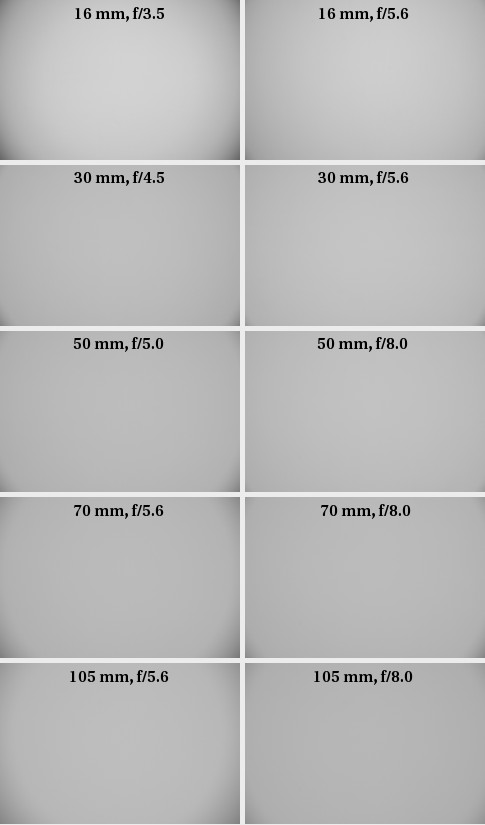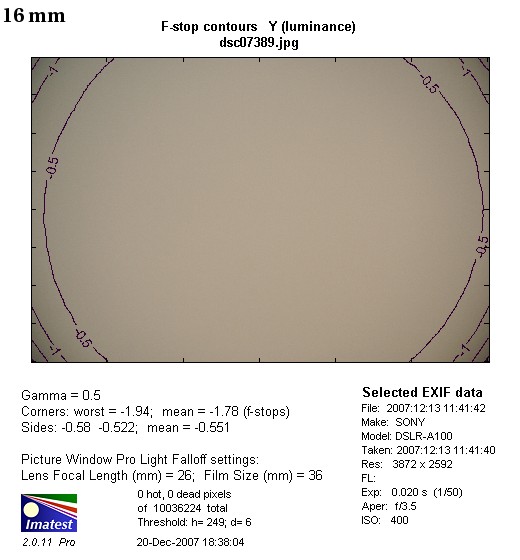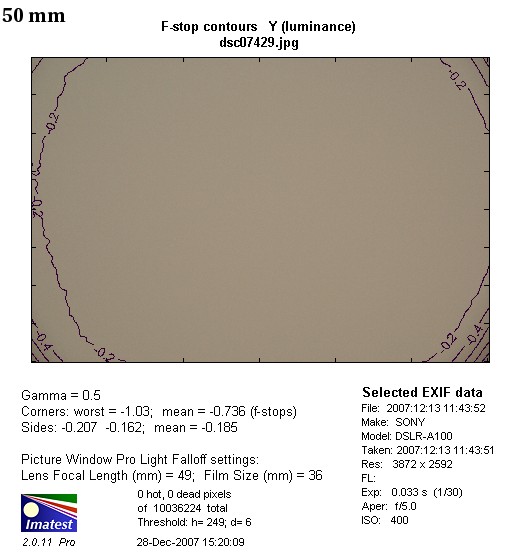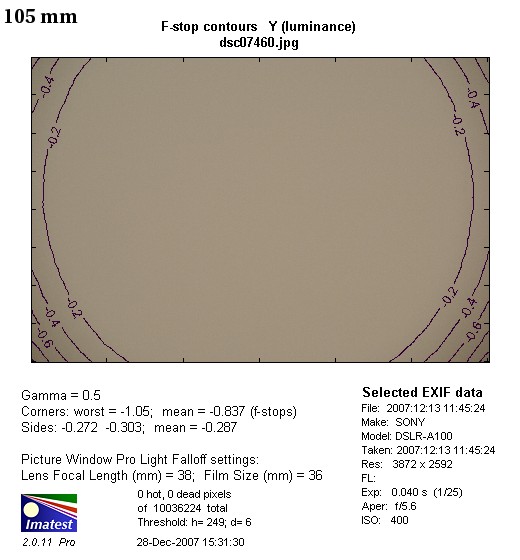Sony DT 16-105 mm f/3.5-5.6
8. Vignetting

At 16 mm its performance is weak. At maximum relative aperture in the frame corners we lose as much as 46% of light (-1.78 EV) – it’s even worse than in the case of the Zeiss. On stopping down to f/4.0 the situation improves a bit because the vignetting level decreases to 40%. By f/5.6 we already have 25% and by f/8.0 – just 18%. Only by f/11 though, when vignetting reaches 13% we can practically talk about getting rid of the problem for good.
Please Support UsIf you enjoy our reviews and articles, and you want us to continue our work please, support our website by donating through PayPal. The funds are going to be used for paying our editorial team, renting servers, and equipping our testing studio; only that way we will be able to continue providing you interesting content for free. |
- - - - - - - - - - - - - - - - - - - - - - - - - - - - - - - - - - - - - - - - - - - - - - - -
Fortunately at longer focal lengths the Sony lens’s performance is better than the Zeiss’s. At 30 mm and relative aperture f/4.5 the light fall-off in the frame corners amounts to 22% (-0.72 EV) so its level can be called reasonable. Using the f/5.6 aperture makes the problem decrease to 17% and using f/8.0 – to 12%.
Very similar results we get at 50 mm. There the vignetting is also 22% at 50 mm focal length. By f/5.6 it decreases to 20% and by f/8.0 – to 12%.
A bit more problems occur at 70 mm focal length. There by f/5.6 the brightness loss in the frame corners reaches the level of 27% (-0.93 EV), and by f/8.0 it decreases to the value of 20%. Only by f/11, though, we can talk about eliminating the problem completely (11%).
At 105 mm and f/5.6 the vignetting amounts to 25% (-0.84 EV). At f/8.0 it decreases to 17% and by f/11 – to 10%.
Can the Sony 16-105 mm be seriously criticized in this category? On the one hand certainly it can – no photographer likes when a lens somehow loses above 40% of light. On the other hand if you wanted to design a lens with such parameters without any vignetting problems, the device would be several times heavier, bigger and, of course, a lot more expensive. Once again it is a good thing to check what the rivals present in this class. We are going to compare the tested lens to a Nikkor 18-135, which at the shortest focal length had the vignetting of 40% so a bit less than in the case of the Sony, in the middle of the range showed a similar level of vignetting but at the longest focal length reached 50% of sheer catastrophe. It is clearly seen that the Sony shouldn’t be ashamed of its performance when compared with its competitors especially that it offers a noticeably wider angles of view, where it is easier to have problems with vignetting.









